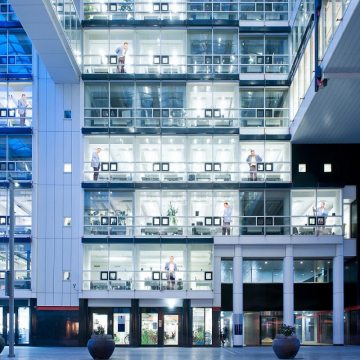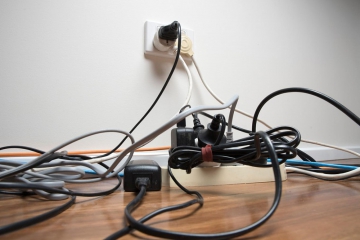Safety in Design, though not a new concept, is gaining momentum in the US to improve safety for employees and reduce costly and sometimes ineffective workarounds to control risks in the workplace.
Safety in Design is a proactive and holistic approach to project development that integrates environmental, health, and safety (EHS) considerations into the engineering design and construction phases. This methodology involves the inclusion of professionals with both engineering and EHS expertise throughout the project's life cycle. By incorporating safety measures from the project's inception, Safety in Design aims to identify and mitigate potential hazards at their source, fostering a safer working environment and reducing risks for workers and the surrounding community.
This approach goes beyond compliance with regulations by actively seeking opportunities to eliminate or substitute hazards through changes in design, layout, or materials. Notably, it emphasizes foresight in anticipating maintenance and operational challenges, ensuring that safety considerations persist throughout the facility's lifespan.
Safety in Design interventions encompass a range of strategies, from the installation of physical safeguards like roof parapets and guardrails to the strategic relocation of equipment for easier access and maintenance. Additionally, it involves thoughtful decisions in process design, such as opting for less hazardous chemicals or planning for efficient vehicle movement within the site.
By addressing safety concerns at the genesis of a project, Safety in Design empowers EHS professionals to make impactful changes, influencing the layout of facilities, incorporating engineering controls, and optimizing infrastructure elements. The ultimate goal is to create a safety-conscious culture that not only safeguards workers during construction but also ensures the long-term safety and ease of maintenance during the operational phase of the project.
Practical Examples
- Roof Parapets or Guardrails: By incorporating features like parapets or guardrails during the design phase, the need for active fall protection is reduced. This not only enhances worker safety but also simplifies ongoing maintenance activities.
- Relocation of Rooftop Equipment: Moving equipment from rooftops to the ground eliminates the need for rooftop access, minimizing the risk associated with working at heights. This decision can have long-term benefits for maintenance and repair activities.
- Chemical Substitution in Water Treatment: Choosing less hazardous chemicals in the design of water treatment processes is an excellent example of substitution from the hierarchy of controls. This reduces the potential risks associated with handling and storing hazardous substances.
- Site Layout Changes for Vehicle Safety: Planning for safe and efficient vehicle movement between buildings, such as forklifts and Mobile Elevated Work Platforms (MEWPs), promotes a safer working environment and reduces the likelihood of accidents.
- Generator Enclosure Design for Maintenance: Considering how generators can be safely removed from enclosures when they fail is a foresighted approach. This kind of planning ensures that maintenance activities are not only effective but also carried out with minimal risk.
- Safety Equipment Appropriately Placed: Many times, electric forklift charging areas don’t have room for safety equipment like an emergency eyewash/shower or spill kit. Reviewing the plans and making room for required safety equipment ensures that work areas are well thought out and safe.
Where do I Begin?
While not a new concept, Safety in Design is starting to gain momentum in the US, following the United Kingdom, where is has been required in the construction industry since 1995. But how does one even begin incorporating the process into their work, or get their company involved? What sorts of skills does someone participating in the Safety in Design process need?
Collaborative, Multi-Disciplinary Team
Implementing a comprehensive Safety in Design strategy is best achieved through the collaborative support of EHS professionals, operations personnel, and building design engineers. EHS professionals bring their regulatory expertise and risk assessment skills, ensuring that safety standards are met, and potential hazards are identified and addressed. Operations personnel contribute frontline insights into the practical aspects of day-to-day work, providing a nuanced understanding of operational intricacies. Building design engineers bring technical expertise to translate safety requirements into the physical design, incorporating protective measures seamlessly. This collaboration fosters an environment where safety is ingrained in every stage of the design process, from initial concept to execution. By combining regulatory compliance, operational practicality, and engineering precision, this holistic approach ensures that safety considerations are not only met but elevated to a core principle in the design ethos.
Review Each Phase of the Project
An essential part of the process is review of the different phases of the design drawings by the safety professional, just as representatives of each of the other disciplines, such as the electrical engineer and mechanical engineers do. This process requires that the safety professional has the knowledge and skills to read engineering drawings and participate in design and engineering discussions.
Currently, these are not skills that are common for most safety professionals to have, nor are they commonly taught in occupational safety degree programs. Because of this, it may in many cases be best to recruit external help or expertise. Whether this is on the part of the design or construction company, or even on the part of the owner team requesting the design.
Is All the Effort Worth It?
Applying Safety in Design principles makes business sense for several compelling reasons:
- Cost Savings in the Long Run: While incorporating safety measures during the design phase may incur initial costs, it often leads to substantial long-term savings. By proactively addressing safety issues, businesses can reduce the likelihood of accidents, injuries, and associated expenses. This includes costs related to workers' compensation, medical care, legal fees, and potential regulatory fines. Additionally, a strong safety record and a commitment to safety practices can lead to lower insurance premiums. Insurers often reward companies with proactive safety measures in place, recognizing the reduced risk of accidents and claims.
- Enhanced Productivity and Efficiency: Safety in Design promotes a work environment where potential hazards are minimized or eliminated, creating a safer and more efficient workspace. When workers feel secure in their environment, productivity tends to increase, and the risk of work stoppages due to accidents or regulatory non-compliance decreases. This positive impact on productivity contributes to overall business success.
- Improved Reputation and Stakeholder Relations: Companies that prioritize safety by integrating it into their design processes demonstrate a commitment to the well-being of their employees, communities, and the environment. This commitment enhances the company's reputation, fostering positive relationships with stakeholders, including employees, customers, investors, and regulatory bodies. A strong safety record can be a valuable asset in competitive markets and should be highlighted in the company’s Environment, Social and Governance (ESG) reports/plans.
- Legal and Regulatory Compliance: Safety in Design ensures that a project or facility aligns with applicable safety regulations from the outset. This proactive approach reduces the risk of regulatory violations and associated penalties. Compliance with safety standards is not only a legal requirement but also contributes to a company's overall risk management strategy.
- Long-Term Sustainability: Safety in Design supports the creation of facilities and processes that are sustainable and resilient. By considering safety throughout the entire life cycle of a project, businesses are better equipped to adapt to changing regulations, technological advancements, and societal expectations. This adaptability enhances the longevity and sustainability of the business.
- Employee Morale and Retention: Prioritizing safety sends a clear message to employees that their well-being is a top priority. This commitment to safety can boost morale, leading to higher job satisfaction and employee retention. A stable and experienced workforce contributes to overall operational efficiency and expertise.
Safety in Design is an investment that yields returns in terms of cost savings, operational efficiency, reputation, compliance, sustainability, and employee well-being. By integrating safety considerations into the design and construction phases, businesses set the foundation for a secure, productive, and resilient future.
Questions on how to implement Safety in Design in your workplace? We're here to help!
Related Services
Want More News and Insights Like This?
Sign up for our monthly e-newsletter, The New Leaf. Our goal is to keep you updated, educated, and even a bit entertained as it relates to all things EHS and sustainability.
Have any questions?
Contact us to discuss your environment, health, safety, and sustainability needs today.








